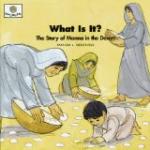Having just wrested a promise from Hahmed that he would take her one moonlight night to the summit of the Great Pyramid, in spite of the strict rules against such nightly excursions, Jill sat very still and quite content upon her camel gazing at the Sphinx. She turned and looked in the direction where the great eyes were staring, and then turning once more towards the mystery of all ages, she urged her camel on until it stood close to the base, and then, dissatisfied, she urged it back until she could look once more from a distance, and shaking her head with a little sigh, spoke in a whisper to the man at her side.
“I wonder, Hahmed,” she said, holding out her hand as was her habit when perplexed or distressed, “I wonder who conceived the idea. No! I mean something quite different—it is—how shall I say—I wonder who it was who, having the meaning of that face in his mind, had the power and the will to hold it there while he carved or chipped it—oh! so slowly into stone. It is easy enough to paint from a model, or hew blocks of marble in the shape of a man or a woman or animal, isn’t it—when you have them in front with their expressions and their forms? But how did the man who did this with only a picture in his mind to rely on dare to use a chisel? Because you can’t rub out mistakes in stone, and sketches wouldn’t have helped him, would they, because even photographs give one no real idea of all the Sphinx means? And I wonder where the look lies—in the eyes or the whole face, or the set of the head, or what? The eyes are rather like a dog’s, aren’t they—a sort of wistfulness and steadfastness.”
“Many have asked, O! woman, though not many who have looked upon the Sphinx have, I think, thought upon just your first point. What do we know about this living stone before which the mightiest, and most wonderful, and most beautiful works of even the greatest masters seem as nothing? Who was he? Whose brain conceived, and hands gave birth to this mystery? Why is his name not engraved somewhere for us pigmies to read? Though doubtless it is in the depths of the hidden chambers in the base which up to now have only been superficially examined.”
“Yes!” broke in Jill, “but whoever he was, slave or prince, captive or free, who taught him what eternity looks like; for that surely is is what the Sphinx sees, the circle with no join, the world—not this one—not Egypt—without end. We all say for ever and ever, but our brains reel when we think for one minute on eternity. Do you think his brain snapped when he put the last stroke? Do you think he was buried with decency with his chisels beside him?”




